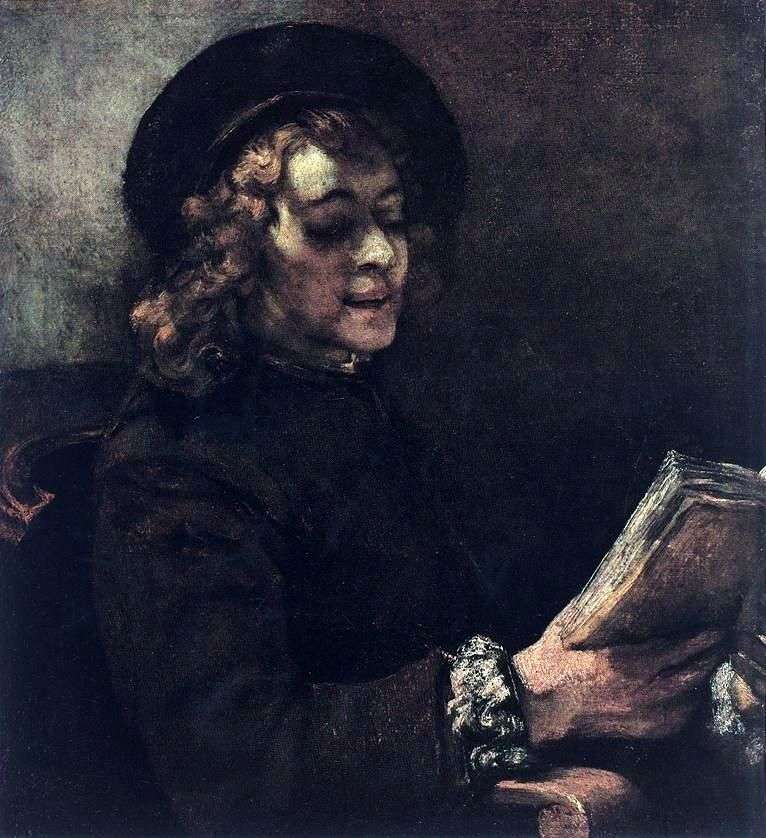
In most portrait images of the 40s and 50s, Rembrandt emphasizes those aspects of a person’s inner world, his attitude to life, which to a large extent were characteristic of him. No wonder they often talk about the “self-portrait” of many of his images.
Famous exceptions are portraits of loved ones. While portraying his son Titus, his second wife Hendrickje Stoffels, Rembrandt especially values and does not want to sacrifice the peculiarity of the spiritual world of these people. He sees in them other aspects of human beauty than in others portrayed.
The charm of youth, joyful spirituality captivate in the portrait of Titus. Sitting in a chair and leaning back a bit, Titus reads a book. It is as if illuminated by an inner light; the thin eyebrows are raised, the mouth is half-open, the disobedient strand of hair has fallen on the forehead, large soft curls fall freely. In all affects the emotion, enthusiasm, youthful freshness of perception.
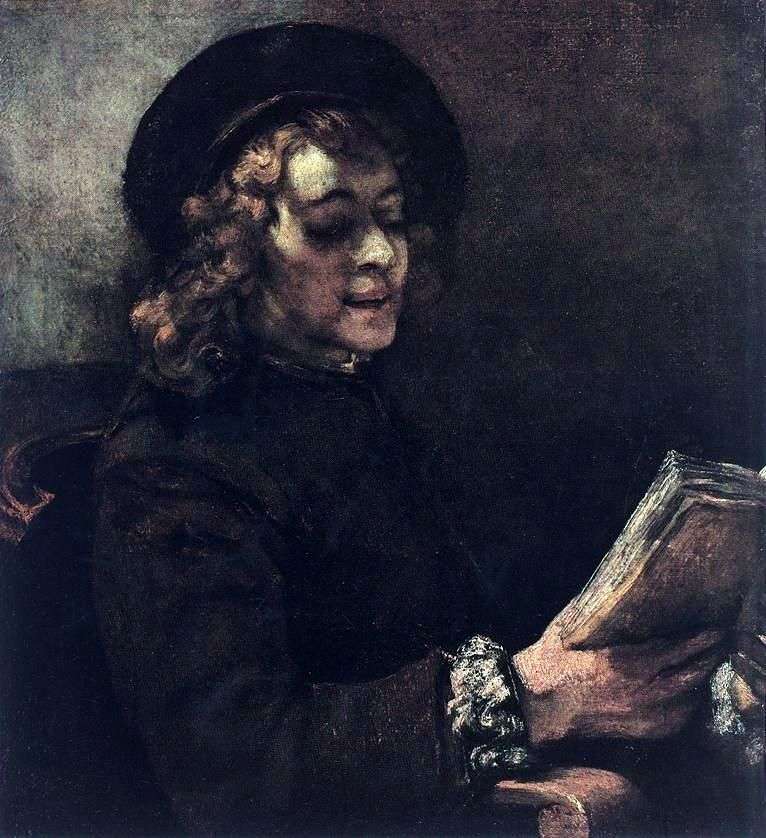 Lector de Titus – Rembrandt Harmens Van Rhine
Lector de Titus – Rembrandt Harmens Van Rhine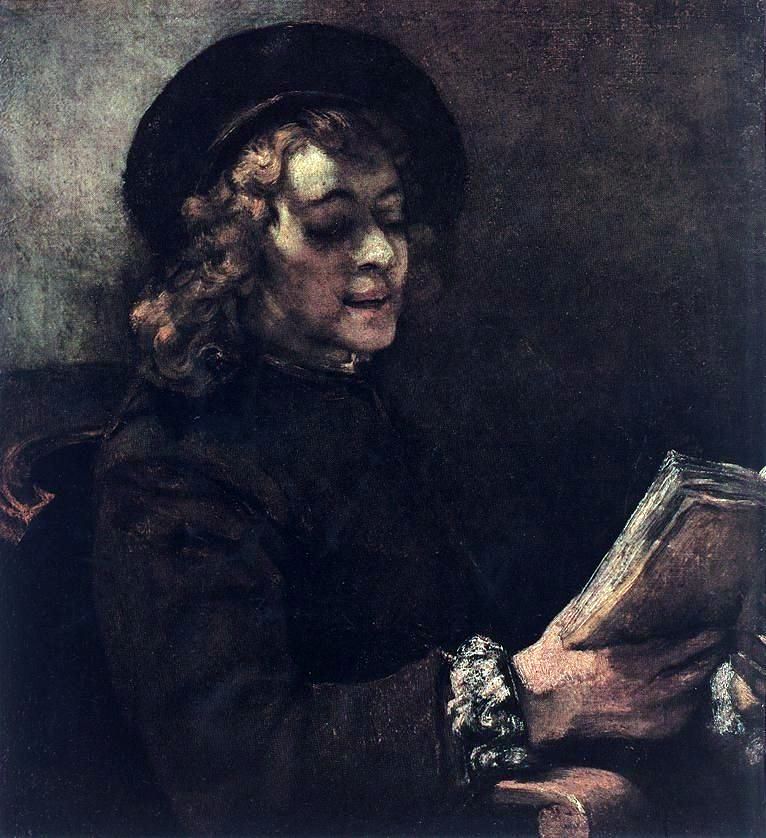 Lecture de Titus – Rembrandt Harmenszoon Van Rijn
Lecture de Titus – Rembrandt Harmenszoon Van Rijn Stone Bridge by Rembrandt Harmens Van Rhine
Stone Bridge by Rembrandt Harmens Van Rhine Hendrickje by the window by Rembrandt Harmens Van Rhine
Hendrickje by the window by Rembrandt Harmens Van Rhine Portrait of an Old Woman by Rembrandt Harmens Van Rhine
Portrait of an Old Woman by Rembrandt Harmens Van Rhine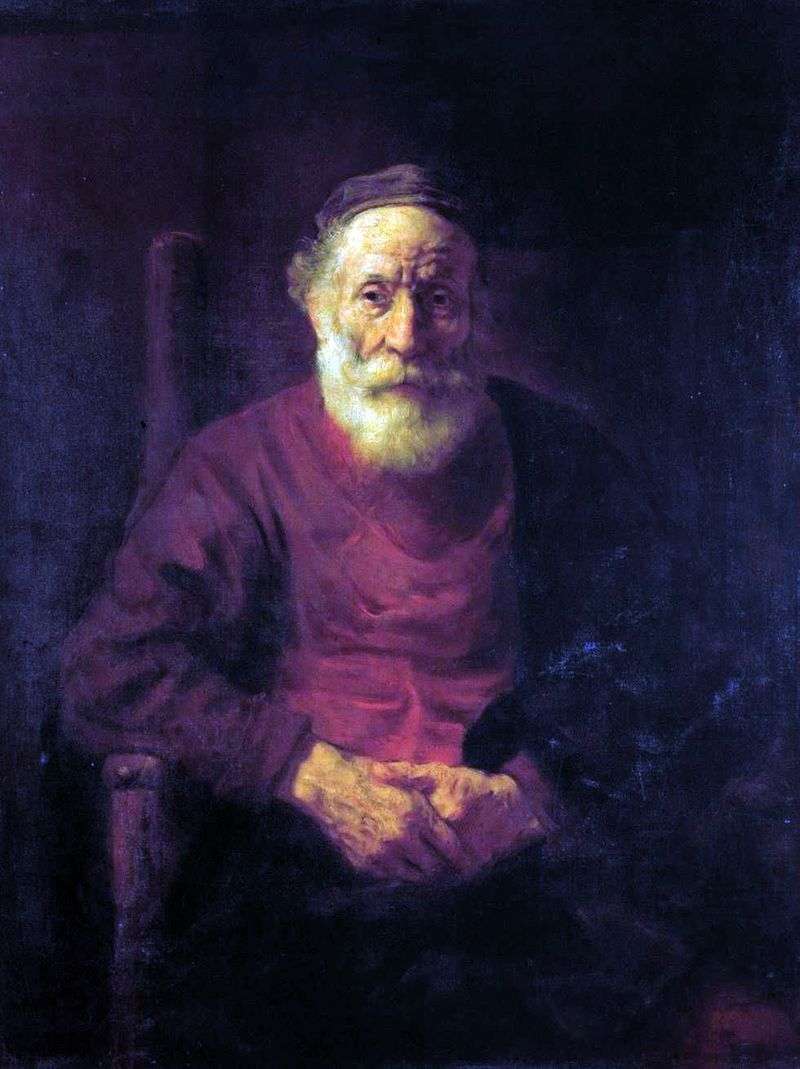 Portrait of an Old Man in Red by Rembrandt Harmens Van Rhine
Portrait of an Old Man in Red by Rembrandt Harmens Van Rhine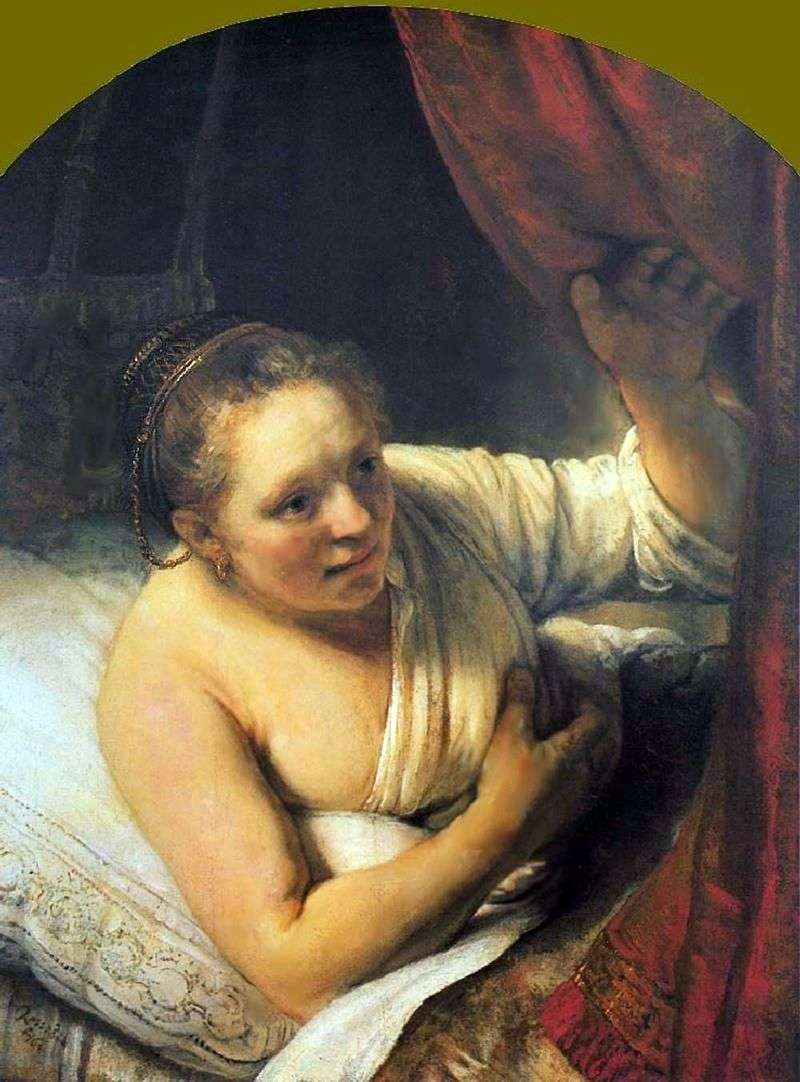 Young Woman in Bed by Rembrandt Harmens Van Rhine
Young Woman in Bed by Rembrandt Harmens Van Rhine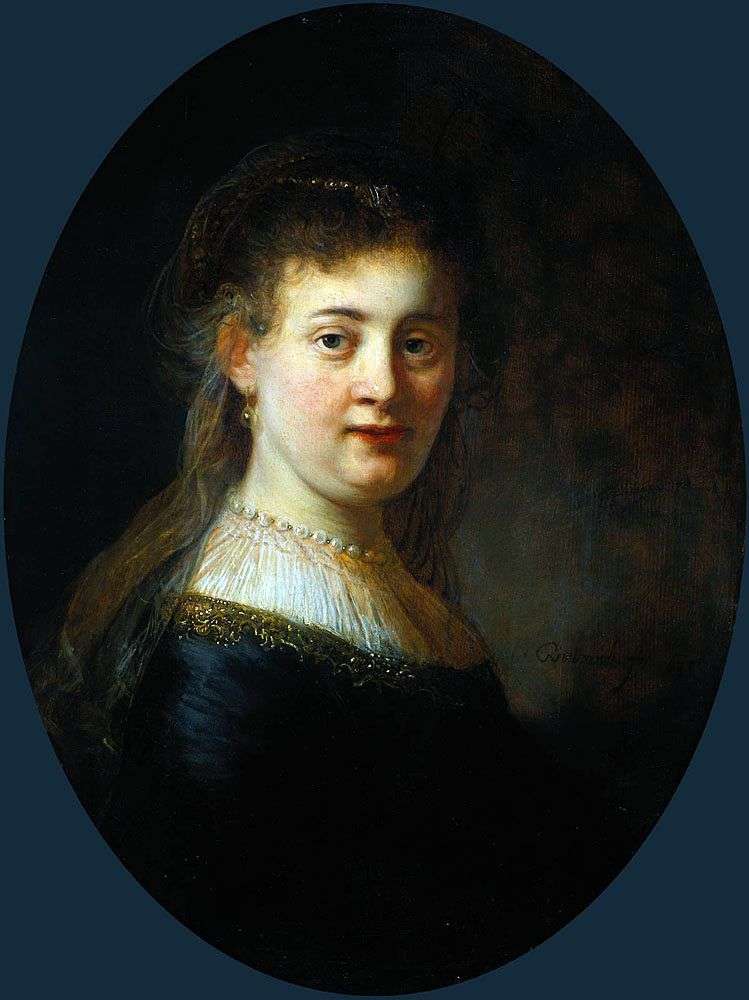 Saskia van Eilenburg by Rembrandt Harmens Van Rhine
Saskia van Eilenburg by Rembrandt Harmens Van Rhine